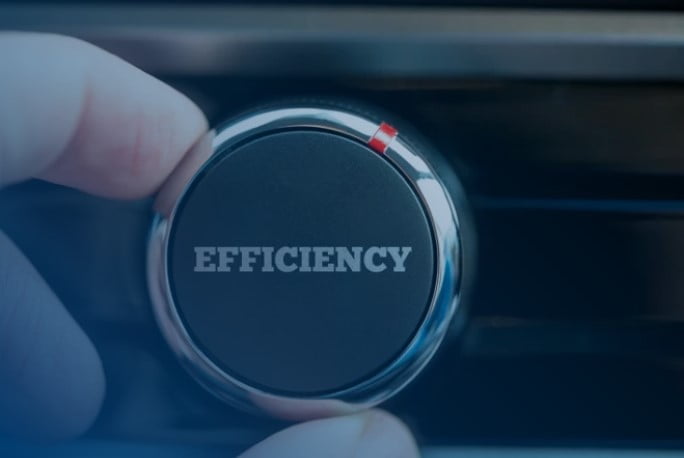Energy efficiency is not a new idea, and most building owners today know that a focus on maximizing building efficiency is essential to keep your building competitive vs. other peer buildings.
Since energy efficiency is better for the environment and your bottom line, it is worth working out what you can do to turn your facility into an energy efficient one.
1. Stop Wasting Energy
One of the simplest ways to stop wasting energy in a commercial building is to simply turn off lights and motors when they are not needed. According to the U.S. Department of Energy, a “typical commercial building” could save 20% on its energy bills easily, just by commissioning the building’s systems to operate as they are intended to. So ask yourself, how do you want your building to run? A good energy advisor can then help you develop a plan to buy utilities cheaper (a supply-side plan), and run your systems more efficiently (a demand-side plan.)
2. Drawing Comparisons
We are asked often: “How can I quantify the utility expense we are wasting every year in our building.” Thankfully, there are easy tools to measure how much wasted utility expense could be added to your net operating income (NOI). A simple release of your utility data to an energy advisor to run an Energy Star Benchmark comparison against similar commercial buildings in Ohio, Indiana, and Kentucky can provide you with a targeted amount of savings. Add to this the potential productivity improvements, or other areas where your business could be enhanced by being proactive, and you’ll find the funding—along with rebates and tax incentives for future projects to achieve your goals.
3. Identify and Prioritize Energy Efficiency Measures
An Energy Efficiency Measure or EEM is an action that reduces energy consumption. There are many ways to cut energy use, from simple, low-cost measures to replacement of large mechanical systems, windows, lights, etc.…so how do you prioritize? Smart asset managers and building owners today set up a goal to compare alternative building improvements and measure the net present value (NPV) of the expected savings.
You can also look at simple payback. Your energy advisor can walk your building, make a list of EEMs, and then work with you to prioritize those improvements that make sense for your business.
4. Get Expert Advice
Energy efficiency in larger commercial facilities is very much multi-faceted. It is rare that anyone in your building will have the skills and knowledge to cover all of the bases, so it can be worth hiring an expert to make best practice suggestions and recommendations. A typical energy advisor has certifications, such as Certified Energy Manager (CEM) from the Association of Energy Engineers. These individuals work with energy solution companies to take a holistic look at your building, and then prioritize steps that align with your business goals.
5. What are Typical Building Improvements that Give the Best Savings?
Smart buildings enabled through building management systems can control lighting, heating and ventilation, and with access controls provide added security and comfort for building occupants. They turn off unnecessary systems in unoccupied areas of the building, and they optimize systems all the time. Upgrading building controls along with recommissioning systems to optimize energy savings and comfort is the best single investment you can typically make in energy efficiency, hands down.
6. Buy Energy Saving Products
Your in-house maintenance team can help you immediately. Something as simple as switching incandescent light bulbs for CFLs or LED bulbs can have a big impact on your energy efficiency. It’s a good practice to look for the Energy Star label on products you buy to compare lower life cycle cost alternatives.
Other simple, cost effective ways you can save on energy include building envelope enhancements, such as checking the seals and caulking on windows and doors to prevent drafts. Consider adding solar film or automated shades to windows to reduce heat from sunlight in offices or rooms. The more low-tech, low cost changes you can make to reduce consumption, the less you need to invest to enhance your overall return. Your energy advisor can weigh these alternatives with you.
7. Get Building Occupants Involved
Ask an expert to data log trends that show how your building is currently running. Most building managers are surprised to discover how long the lights are left on, and that systems are not turning off or setting back as they thought when building occupants are gone.
If you are enhancing your building by increasing energy efficiency, it is a good idea to get your occupants involved. They may be able to provide insights into ways to purposely run your mechanical and lighting systems.
Provide them with a list of energy efficient options and suggestions they can implement in their own businesses. Let them know about building-wide changes designed to reduce energy consumption, and that they are in an intelligent building.
8. Get Water Wise
Most people don’t think about water when they think energy efficiency, but since hot water requires energy to be heated, changing the way you use water in your building can improve your efficiency. Repair leaks, insulate pipes and install water heater blankets. Reset hot water temperatures from the typical 180 F when it’s not so cold outside with automated controls. Turning domestic hot water temperature down a few degrees is another great way to save energy, particularly in commercial buildings where tenants don’t use the hot water for showering or bathing.
There may be other ways to make your building more energy efficient, but these should help you get started in a conversation with your energy solutions advisor or firm. You would be surprised how small a change you need to make to see significant improvements!




